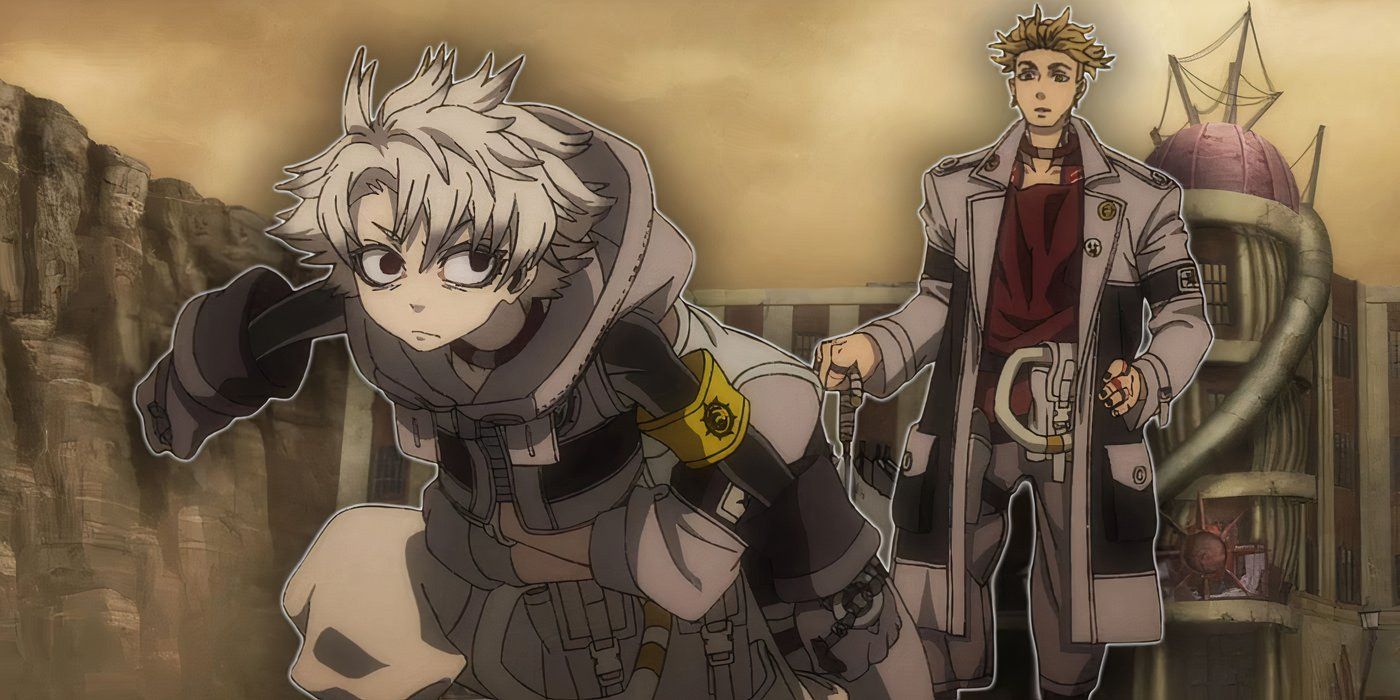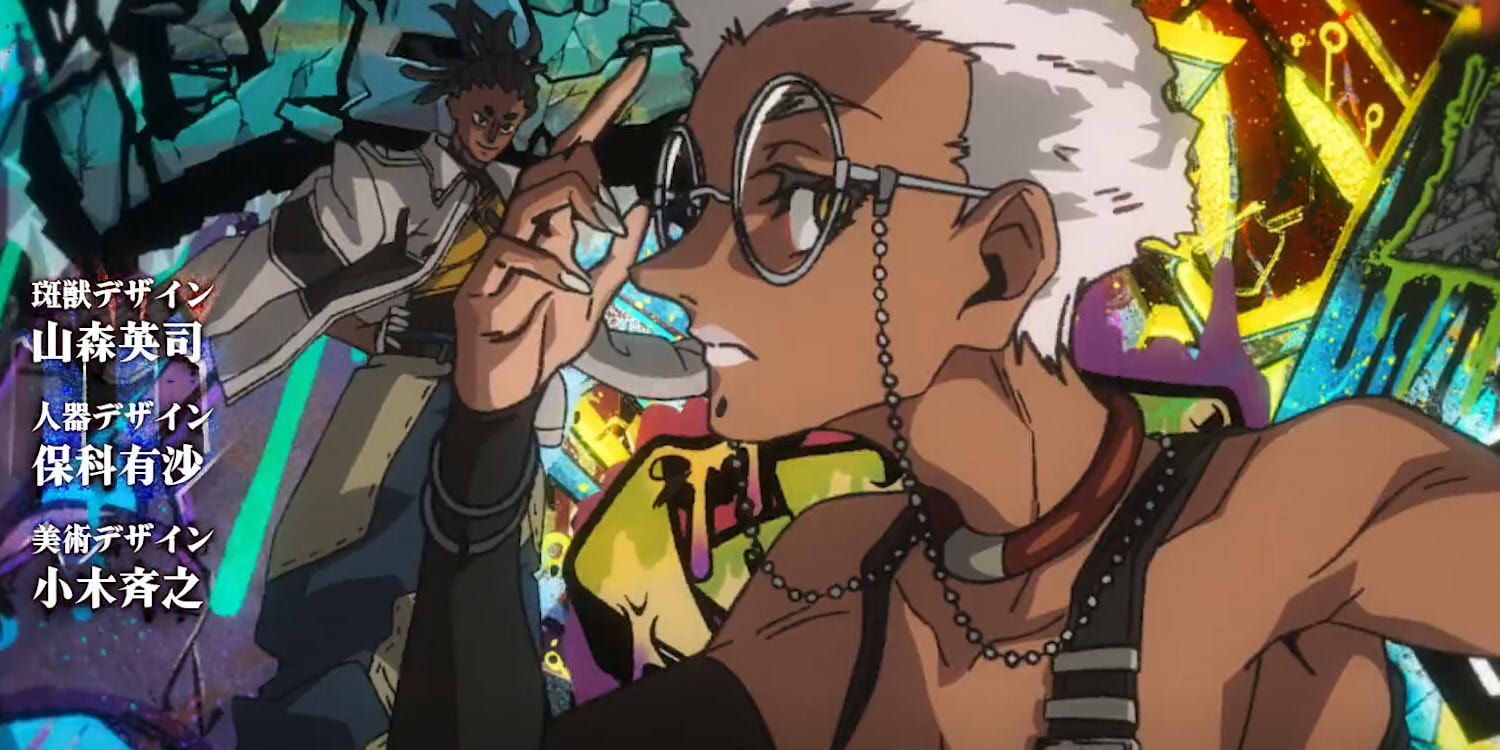
I’ve been watching a lot of anime this year, and Gachiakuta really stands out as one of the best. It’s a classic shonen action series, but what sets it apart is a really thoughtful core idea, backed up by a deep and interesting backstory. The animation is fantastic – seriously, the art style is gorgeous – and I quickly became invested in the characters, who are all relatable despite their flaws. Honestly, though, if I had one small criticism, it would be the first opening theme. It just didn’t quite live up to the rest of the show.
Anime openings usually have a song and visuals that work together to set the tone for the show and give viewers a sneak peek at the story and characters. The first opening for Gachiakuta didn’t quite achieve this, but the second one more than compensated for its shortcomings.
“HUGs” by Paledusk Didn’t Do Its Job as a Proper Anime Opening
Despite not being one of the strongest anime openings this year, Paledusk’s “HUGs” resonated with many fans of Gachiakuta. The song effectively conveys the dark and intense atmosphere of the series’ early episodes. Vocalist Daisuke delivers a powerfully angry performance, practically shouting into the microphone to reflect the protagonist Rudo Surebrec’s rage, all backed by his driving electric guitar, making it a natural fit for the Gachiakuta soundtrack.
Many viewers enjoyed the visuals accompanying the song “HUGs,” despite some disturbing imagery. The video introduced a bleak and symbolic world. Rudo’s environment is a wasteland buried in trash and choked by pollution, with garbage constantly falling from the Sphere – a society that causes pain and resentment to those outside its perfect, privileged inner circle.
Rudo embodies the rage stemming from the Sphere’s deeply unjust rules and how that bitterness consumes people, visually represented through disturbing images of decay and body horror. The opening sequence for “HUGs” relies heavily on symbolism and artistic imagery that connect to the core themes of Gachiakuta. While this is its biggest strength, it’s also why many anime viewers don’t enjoy it.
The opening sequence relies heavily on abstract imagery and striking graffiti, but it doesn’t quite connect with the audience. It only briefly shows a handful of characters from the increasingly complex world of Gachiakuta, and doesn’t explain who they are or what their roles are. They appear and then quickly disappear, dissolving into dust and being carried away by the wind.
The initial visual appeal of “HUGs” and its opening sequence faded after the third episode. The anime shifted its focus to developing other characters and expanding on the main plot. As Rudo got to know and joined the Cleaners, the series, known as Gachiakuta, became a bit more optimistic and cheerful. While the world around Rudo remained bleak, his new life with his friends began to feel separate from the intense and aggressive atmosphere of “HUGs.”
Mori Calliope’s “Let’s Just Crash” Simply Does Everything Right for Gachiakuta



In episode 14 of Gachiakuta, Mori Calliope’s song “Let’s Just Crash” became the new opening theme, accompanied by a fresh introductory sequence. This new opening better captures the anime’s overall feel and features all of the main characters. The sequence begins with Rudo, displaying his signature anger, and is followed by Riyo, Zanka, and Enjin, each looking at the camera in a way that reflects their personalities.
“Let’s Just Crash” feels less harsh and confrontational than “HUGs,” while still maintaining the powerful energy that first defined Gachiakuta’s style. The story remains gripping, but now explores themes beyond Rudo’s rage at the Sphere and his quest for revenge for Regto. Mori Calliope’s cheerful laugh at the song’s start adds a playful touch, highlighting the bond Rudo forms with the Cleaners, who become like a found family. The music and animation then build to a unified expression of fury, revealed as we meet the other key characters and see their Vital Instruments.
As a huge fan, I’ve been pouring over the intro sequence, and it’s packed with little details! The glimpses of the supporting characters aren’t just throwaways – they really tell you a lot. For instance, seeing Corvus and Semiu before the other Cleaners immediately establishes them as the leaders. And Zodyl gets noticeably more screen time than the other Raiders, hinting he’s the one in charge. What I love is how clearly the intro visually separates the Cleaners and the Raiders – it instantly shows you who’s on which side and sets up the big showdown we know is coming!
The show subtly hints at Amo’s fate, which fans have been concerned about since a troubling scene in Episode 13, by showing white flowers tucked into her boots before revealing her face. The music becomes slower and more melancholic at this point, suggesting the shared sadness from everyone’s difficult pasts in this damaged world. Then, both the song and the visuals pick up again, conveying a quiet but firm commitment from the characters to face whatever comes next together.
“Let’s Just Crash” and its visuals work together beautifully, using symbolism and character depictions to highlight the key moments of Gachiakuta‘s story. The song and video are engaging and enjoyable, capturing your attention without needing to rely on overly shocking or flashy elements that quickly become stale.
Fans are hoping Mori Calliope’s involvement will lead to a win for Gachiakuta, and also earn it the award for Best Opening Song & Sequence. Even though Gachiakuta follows a familiar shonen anime formula, it offers more than what its predecessor, “HUGs,” did. The fact that the biggest criticism of the anime focuses on the first opening suggests the rest of the writing and animation are truly excellent.
Gachiakuta is available to stream now on Crunchyroll, with new episodes releasings every Sunday.
Read More
- Clash Royale Best Boss Bandit Champion decks
- PUBG Mobile or BGMI A16 Royale Pass Leaks: Upcoming skins and rewards
- Mobile Legends November 2025 Leaks: Upcoming new heroes, skins, events and more
- Hazbin Hotel Season 2 Episode 5 & 6 Release Date, Time, Where to Watch
- Zack Snyder’s ‘Sucker Punch’ Finds a New Streaming Home
- Deneme Bonusu Veren Siteler – En Gvenilir Bahis Siteleri 2025.4338
- Clash Royale Season 77 “When Hogs Fly” November 2025 Update and Balance Changes
- The John Wick spinoff ‘Ballerina’ slays with style, but its dialogue has two left feet
- Tom Cruise’s Emotional Victory Lap in Mission: Impossible – The Final Reckoning
- There’s A Big Theory Running Around About Joe Alwyn Supporting Taylor Swift Buying Her Masters, And I’m Busting Out The Popcorn
2025-11-10 21:19